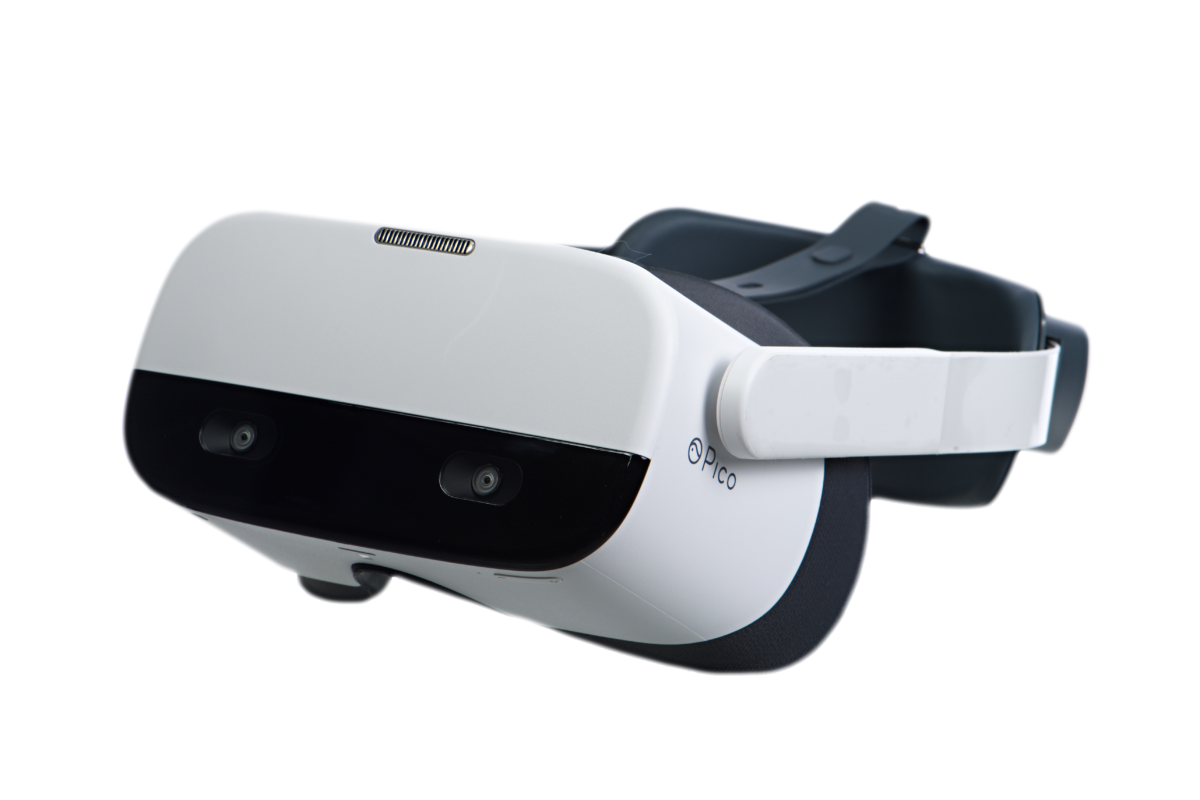“I want to add virtual reality to my training program — but where do I start?”
This question, in some form, tends to kick off our first conversation with corporate training managers and executives. By now, most have heard the benefits of adding VR training to their programs, but there’s still something of a learning curve.
In this article, we’re going to discuss VR software for training and get you up to speed, quickly.
What Exactly is Virtual Reality?
It might seem silly to start here, but there’s a fair amount of confusion in the very definition of ‘virtual reality’.
When we talk about virtual reality, we’re describing a fully immersive, virtual world that completely replaces the physical environment (the “real” world). To achieve this immersive experience, the user’s eyes, and often ears, are completely obscured from the outside world by a screen and headphones, often built into the same HMD (head-mounted display). The computer then fully controls the inputs to these sight and sound sensors.
When you’re in a virtual reality experience, you’re operating within a simulated and, (in the case of PIXO’s VR), three-dimensional, photo-realistic, computer-generated world. This virtual world can be realistic, fantastical, or a blend of both.
In the realm of VR training, we’re typically creating realistic environments to simulate real-world scenarios and measuring various performance factors.
So that’s a working definition of virtual reality.
However, before we depart this topic, I think it’s necessary to differentiate virtual reality from two other closely related concepts — augmented reality (AR) and 360-degree video.
Augmented reality is adding computer-generated content to the world around you, augmenting it with additional visuals, sounds, and data. This technology is meant to ‘enrich’ the real world, but the virtual and real remain distinctly separate and neither interact with the other.
A 360-degree video environment is a type of virtual experience. However, instead of being placed in an interactive world, you are placed inside of a static video and allowed to navigate and control your viewpoint within that world. Again, there is no active engagement in this virtual video environment.
For this guide, we’re going to focus on true virtual reality only.
Virtual Reality Authoring Tools
You want your virtual reality training environment to be as close to reality as possible, especially if you’re doing something like military, construction, safety, or first responder training. There’s little room for error if you’re teaching folks how to get a dangerous job done right the first time they encounter it in the real world.
These are ideal scenarios for VR training and far superior to most non-virtual alternatives.
Training programs that need this level of quality will require you to know more about the underlying technology to get the right experience. One of the best places to start exploring VR technology is by learning about the VR engine itself — this is the software that will run your virtual world.
The strengths and weaknesses of these software tools, along with the talent and experience of the development team using them will determine the quality of your training content and VR experiences.
Let’s take a look at some of the most popular virtual reality engines.
- Unreal is the premier VR engine, (in our experience). It produces higher quality visuals and smoother movement than other alternatives. Created by Epic Games, Unreal gives VR content designers and programmers access to the full C++ source code. This access provides developers ultimate control and few limitations. However, it does require more experienced talent — advanced 3D designers and skilled programmers, but that’s ultimately an advantage to the production of your training content. Learn more about Unreal on their website.
- Unity is very popular, especially among indie and small team VR studios. Some of their biggest strengths include an excellent development community and their use of C# and Javascript, which tend to be fundamental skills for any software engineer. However, Unity does not provide access to source code, which can be limiting for the purposes of high-quality enterprise deployment. Learn more about Unity on their website.
- CryEngine is a lesser-known game engine which has been used for VR, but most VR studios will tell you it suffers from an outdated user interface. The biggest criticisms include disorganized documentation, its popularity seems to be waning, and there are several gray areas in their licensing agreement. Learn more about CryEngine on their website. One interesting note, related to CryEngine is that Amazon grabbed a lot of CryEngine engineers and built what some consider the modernized version of CryEngine — Amazon Lumberyard.
While all of these virtual reality authoring tools are excellent, the requirements of your VR training are going to inform which of these engines make the most sense.
In the case of PIXO VR, we specialize in and have developed a growing library of safety and high-impact training content for the construction, manufacturing, energy & utility verticals. We’ve found that, for these training programs, the superior visual fidelity and full access to the C++ source code allows for our proprietary forking of the Unreal engine, creating an improvement in quality of experience over our previous use of Unity.
Popular VR Headsets and Environments
Even though this article is about VR software, it’s essential we touch on hardware. The virtual reality immersive experience is highly dependent on the headset, and your VR hardware requirements can influence your VR software decisions.
Here is a brief rundown of VR hardware and the ideal VR training uses of each.
Professional Training Content
HTC Vive Pro – HTC’s Vive and Vive Pro are among the most advanced VR headsets on the market today. This headset is going to deliver some of the most realistic training experiences and leave your employees actually asking for more training time. Crazy resolutions, powerful hardware, and tons of sensors make this the preference for enterprise training departments in need of highly realistic and detailed VR content.
Windows Mixed Reality – Microsoft has taken a slightly different approach to the VR headset, using a variety of hardware manufacturers (HP, Lenovo, Dell, etc.), allowing it to run on both high-end and more basic desktops. As the name suggests, the Mixed Reality headset straddles the fence between VR and AR experiences, accommodating both. Critically, the HP Windows Mixed Reality headset can be paired with the HP Z VR Backpack — a high-powered wearable unit that allows for a tetherless VR experience. For pure mobility, the WMR and HP Z can’t be beat. (If, for whatever reason, a tetherless experience isn’t necessary, the HP Z can also be run in a more basic docked, desktop mode.)
Oculus Rift — As “the one that started it all”, Oculus has been aggressively improving their platforms since the debut of the Rift i
n 2016. While Oculus was one of the earliest entrants in the VR headset market, they have struggled a bit to get out of the R&D and beta phase. Only recently have they become a robust and professional peer competitor to HTC’s Vive and Vive Pro models.

Introduction to VR and Gaming
Sony PlayStation VR — If you’re a console gamer this is a great way to get a pretty good first virtual reality experience within a consumer price range.
Cheaper “VR Lite” Experiences
The last three headsets on our list are only recommended as entrees into the world of virtual reality — “beginner-level”, if you will. These are meant to work with your mobile phone and can provide a teasing glimpse into the potential of a more complete virtual reality.
- Samsung Gear VR
- Google Daydream View
- Google Cardboard
IMPORTANT NOTE: If you’re serious about sampling a true VR training experience, buy one of these if you like, but know they are not the final destination of your journey, merely the first steps. If you want to jump ahead to the good stuff, contact one of our VR training experts, and we’ll bring “the real thing” to you.
How to Invest in the Best VR Training Software
As you start considering an investment in VR training, here are the most crucial steps:
- Talk to a VR Training Expert Early – They can cut through all of the techno-babble in the market, educate you on the right trends and innovations to follow and help you explore the possibilities, opportunities, and ideal places to introduce compelling new training scenarios.
- Find a Good Starting Point – Focus on one or two specific areas of training that will benefit from a virtual reality — fully-immersive and realistic — training environment. Typical starting points are to replace training that is traditionally dangerous, expensive, or disruptive to normal operations.
- Content, Content, Content! – This is probably your most important consideration. A fully realized VR Training program will require a solid library of training content that meets your training needs — but how do you get what you need? While many training requirements will require some amount of custom content creation, it’s not necessarily one or the other — custom or premade experiences. Instead, employ a combination of both: existing training modules that can be customized for your needs. If you can find a company like PIXO VR that offers an existing library and a subscription pricing model, (and to our knowledge, we’re one of very, very few doing this), you can start much faster and substantially cheaper by leveraging some nimble, lightweight personalizations that can tailor existing VR Training content to meet your own specifications. This avoids the sticker shock of starting from scratch with a fully custom VR experience that only you can use. If you’d like to know more, ask us about our VR Content Library subscriptions.

PIXO Has Improved VR Management to One Easy Step

Further Reading
- How to Pick the Right Authoring Tools for VR and AR, O’Reilly
- Steam VR Community, Valve
Getting Started with VR: The Best Software Tools are Free, Makezine
Feature Photo by Lux Interaction on Unsplash
